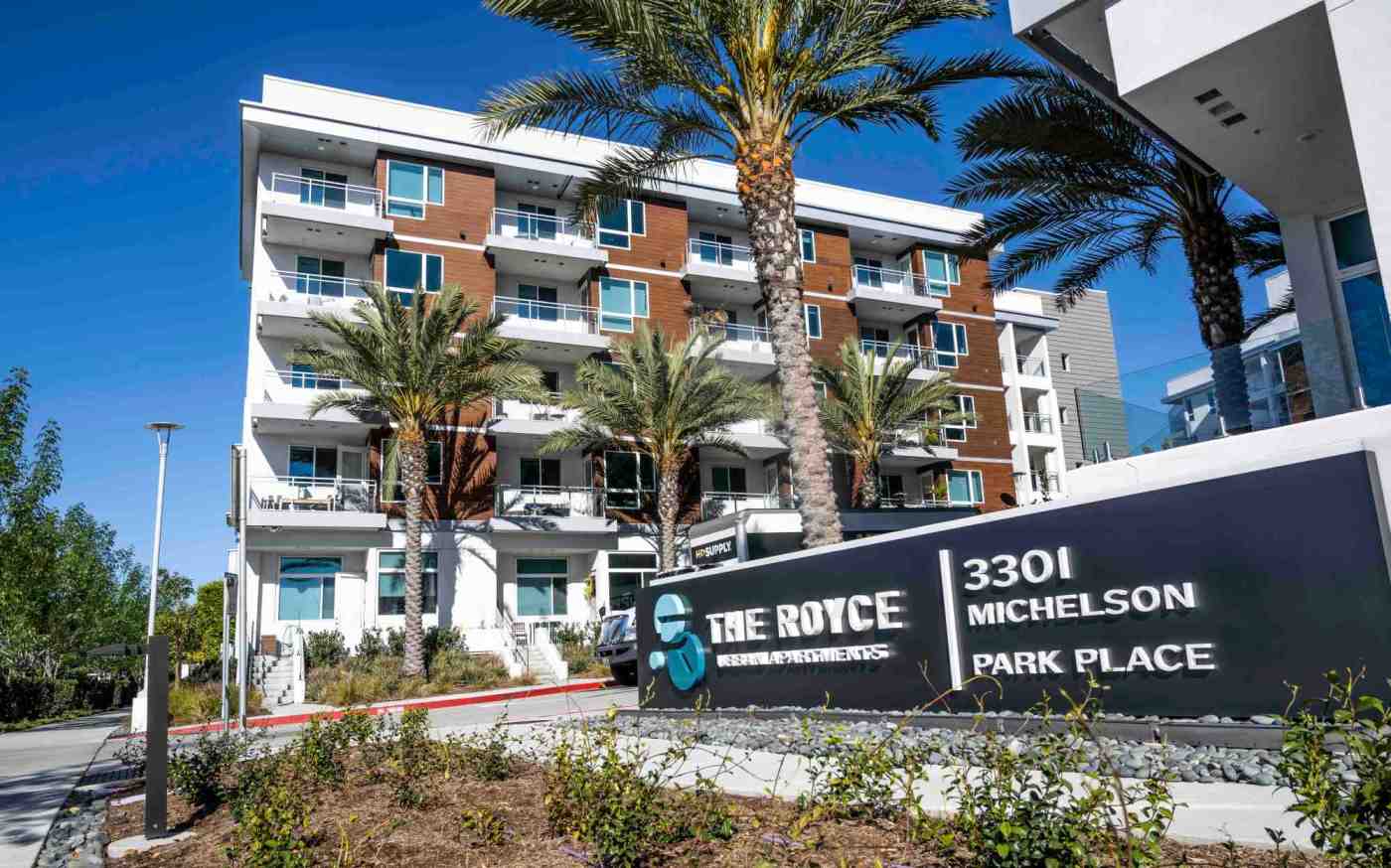Rents at more than 1,000 units at two apartment buildings in Irvine are expected to be marked down and turned into the city’s first housing priced for people making middle-of-the-road incomes.
Sometimes called “workforce housing,” the lower-rate units are meant to target renters who fall into a void within the housing market — what’s been dubbed the “missing middle” — where they make too much for entry into affordable housing programs but not enough to afford today’s prices.
Projects that convert market-rate units into middle-income homes have been adopted by cities up and down the state in recent years, including several in Orange County. Anaheim was the first.
The deals typically involve cities joining joint powers authorities with middle-income housing programs, which issue government bonds to buy apartment buildings. Then they slash the rents for the units in exchange for not paying property taxes.
In Irvine, city leaders voted this week to move forward on two proposals by different joint powers authorities to convert units at complexes off Jamboree Road: The Royce Apartments on Michelson Drive and nearby Toscana Apartments on Via Lucca.
Council members approved joining the California Statewide Communities Development Agency for the Royce project, and asked city staff to try for a better deal before joining the California Municipal Finance Agency for the Toscana Apartments. Once an agreement is reached on that one, the city manager can go ahead and finalize it, city leaders said.
In all, the deals are expected to lower rents on 1,083 units in both complexes, which each have a mix of studio, one- and two-bedroom units. The newly priced apartments would be geared toward individuals or families making 80% to 120% of the area’s median income, which is between $75,300 and $89,650 for a single person, or $107,550 and $128,050 for a family of four.
The new prices would be phased in as the leases of existing tenants expire, so no one would be kicked out of their apartment, officials said.
Rent prices are expected to be lowered on more than 1,000 apartment units at the Toscana Apartments, seen here, and Royce Apartments in Irvine, CA as city leaders try to provide affordable options for people who fall into what’s been called the “missing middle” – those who make too much to qualify for typical affordable housing programs but not enough to afford the average apartment under market rate. (Photo by Paul Bersebach, Orange County Register/SCNG)
The city won’t be expected to provide funds for purchasing the properties, but officials agree to forgo property tax revenue for the next 30 to 35 years, or until the bonds are paid off. In this case, that means Irvine would miss out on $77,000 a year from the Royce property and $50,000 from the Toscana. Some school districts impacted by the loss of property tax revenue would be eligible for backpay from the state, because they are guaranteed a level of funding per student under Proposition 98, a city staff said.
Related links
How a workforce rent program aims to plug ‘missing middle’ affordable housing gap
‘Cracking the code’ on affordable middle-income housing
New law counts ‘workforce’ apartments as meeting middle-income housing quotas
Costa Mesa turns down workforce housing proposal
Newport Beach firm converting $300 million apartment complex into workforce housing
First workforce housing for middle-income renters planned in Orange
Anaheim will cut rents on more than 1,000 middle-income apartments
When the bonds are paid off, the city could take ownership of the property, then sell it or refinance to recoup some funds. City leaders indicated they wanted to be sure the properties were dedicate to the Irvine Community Land Trust at that point, which could maintain the affordability permanently.
Agreements with CSCDA and CMFA still need to be finalized, “then bonds will be sold via separate public bond offerings for Toscana and The Royce,” Irvine spokeswoman Kristina Perrigoue said in an email. “Once the bonds are sold, the properties will be purchased.”
A spokeswoman for investment group Waterford Property Company, which is working with the CSCDA on the Royce project, said escrow is expected to close on the property next month.
“From now until then, CSCDA and Waterford will work with investors to finance the property with municipal bonds,” she said in an email.
CMFA and partner Catalyst Housing Group are eyeing mid-April to close on the Toscana, Perrigoue said.
Related Articles
How to spur housing production in California
Californians 35% less likely to qualify for starter home than US house hunter
More student, faculty housing ahead for California colleges?
Buying is more affordable than renting in these cities
Black homeownership drops in pandemic era, by this math





